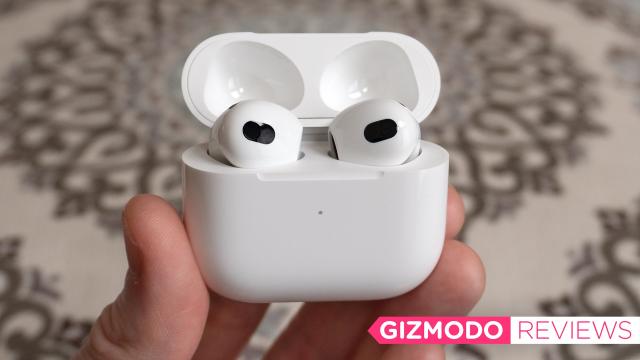Apple released its first-generation AirPods five years ago, and aside from a wireless charging upgrade, its design hasn’t changed since 2016. It’s a testament to the popularity of the product that Apple hasn’t needed to update them in so long, but redesigned AirPods are finally here, and while they may be missing features found on similarly priced earbuds today, they still deliver a fantastic experience when paired with Apple’s other hardware.
Apple wasn’t the first company to get wireless earbuds out the door — Bragi’s Dash gets credit for that — but the Cupertino company did succeed in making the first wireless earbuds with a charging case that was convenient to carry, and wireless connectivity that wasn’t endlessly frustrating, thanks to its W1 chip, and later, the H1. It turned truly wireless earbuds from a niche product with lots of drawbacks to a consumer-friendly device that sold by the millions, and created a market that has since exploded. As a result, the latest AirPods aren’t charting a new course like the originals, but instead introduce some much-needed refinements and improvements on an already incredibly popular product. Are they worth the upgrade? That depends.
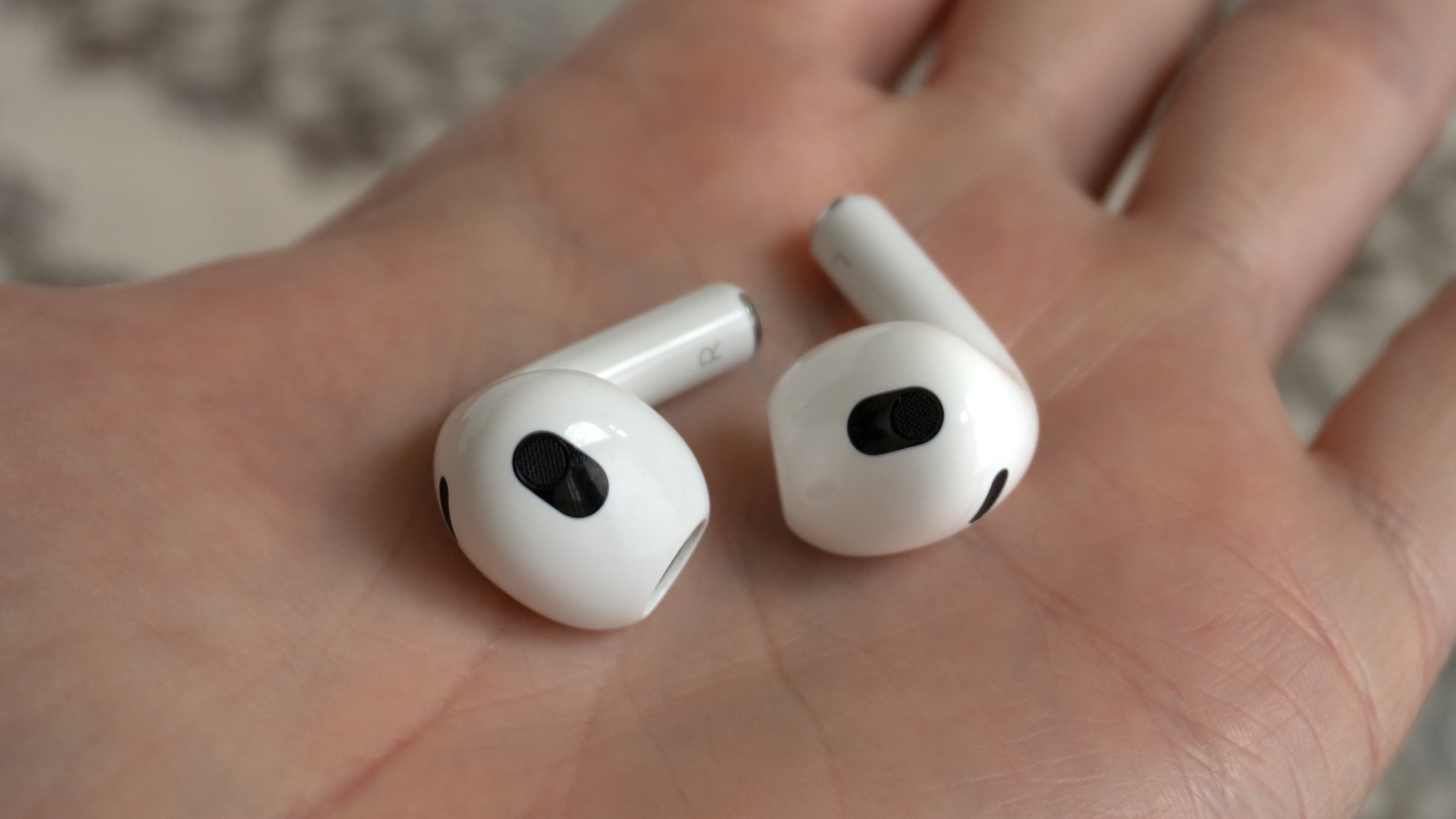
Apple AirPods (2021)
WHAT IS IT?
The first major redesign of Apple's AirPods that borrows features and design elements from Apple's AirPods Pro.
PRICE
AU$279
LIKE
Excellent sound (despite the lack of eartips); incredibly comfortable to wear for hours; quick access to Siri; H1 chip makes connectivity seamless
DISLIKE
No active noise cancellation; lack of eartips could make the fit feel off for some
A Pro-Inspired Design
It doesn’t take much detective work to figure out where Apple found its inspiration for the AirPods’ redesign. The earbuds look and feel almost identical to the AirPods Pro — minus the swappable silicone tips.
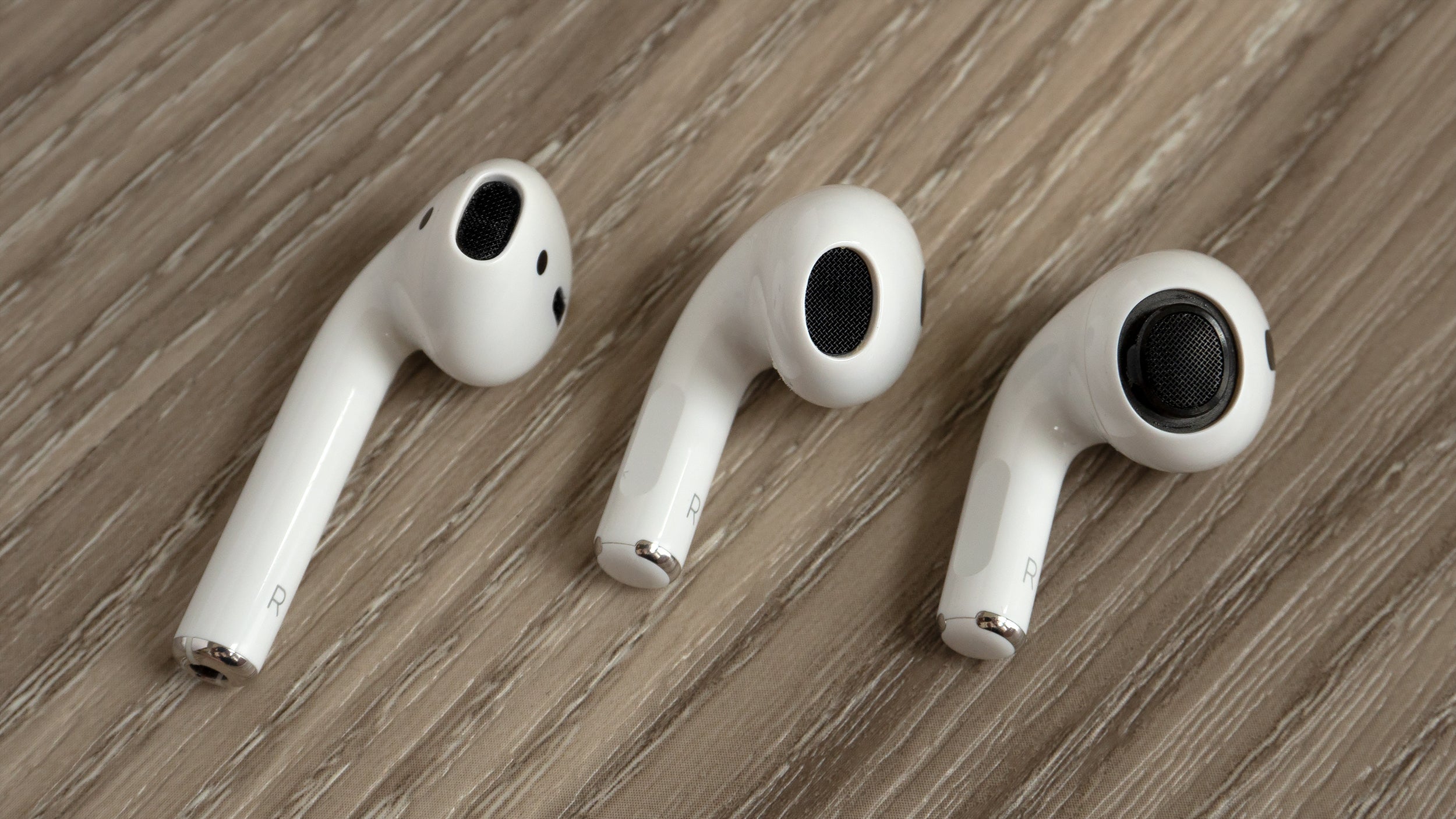
The third-gen AirPods are a little smaller than the AirPods Pro, which makes sense given that they lack active noise cancellation hardware, and can also get away with a smaller battery without that feature.
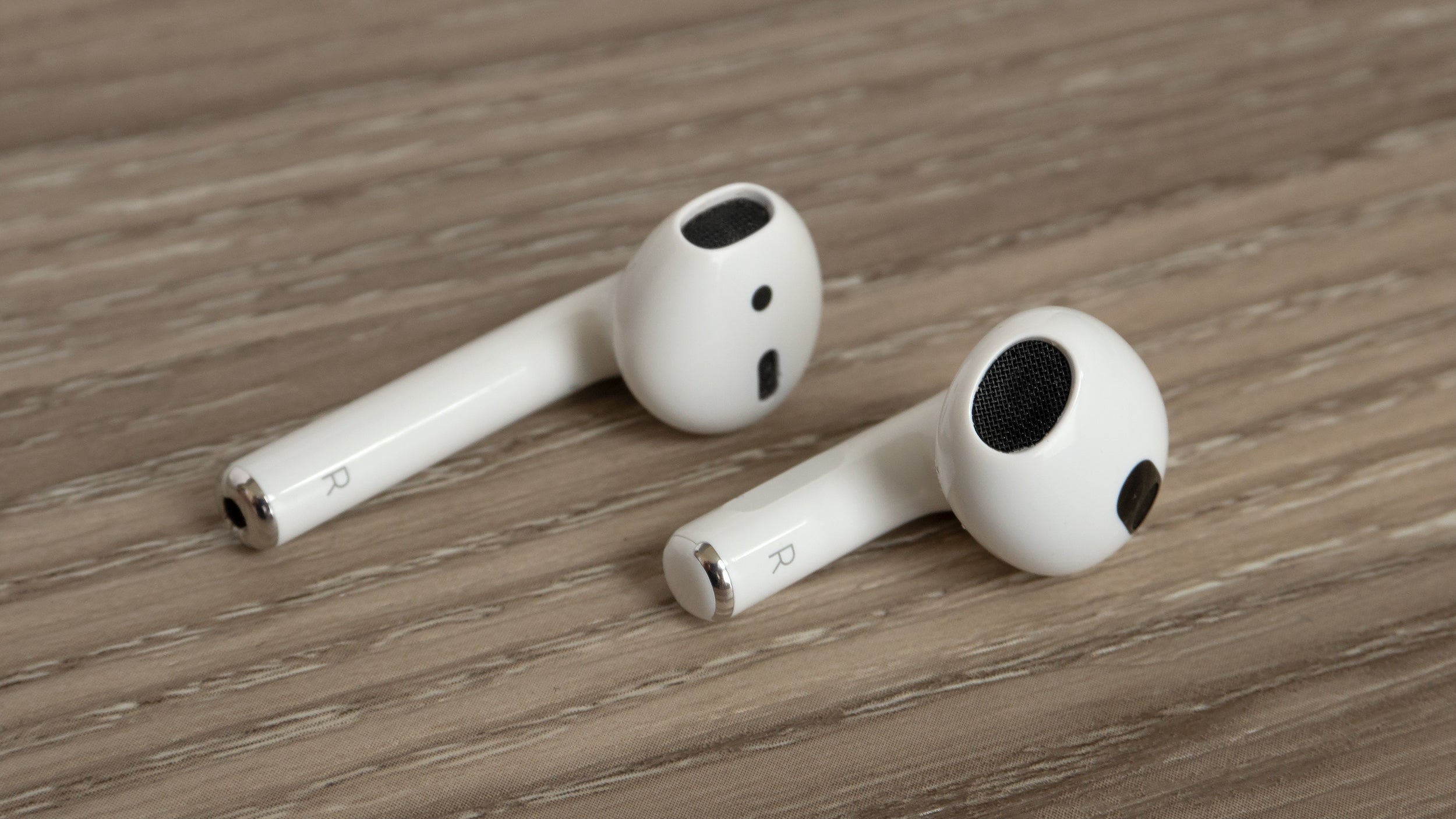
The new AirPods not only feature shorter stems than the older generation AirPods, they also replace the tap functionality with a force sensor on the stem that you squeeze to activate playback controls. I’m still not a fan of having to touch my wireless earbuds for any reason, particularly buds that aren’t held securely in place by extra wings or silicone tips, because I find it tends to easily dislodge them. While the squeeze functionality works adequately if you’re someplace you can’t talk, having the ability to just ask Siri to skip tracks or adjust the volume is just so much easier than having to squeeze something, and it remains a big selling point for Apple’s AirPods for iPhone users.
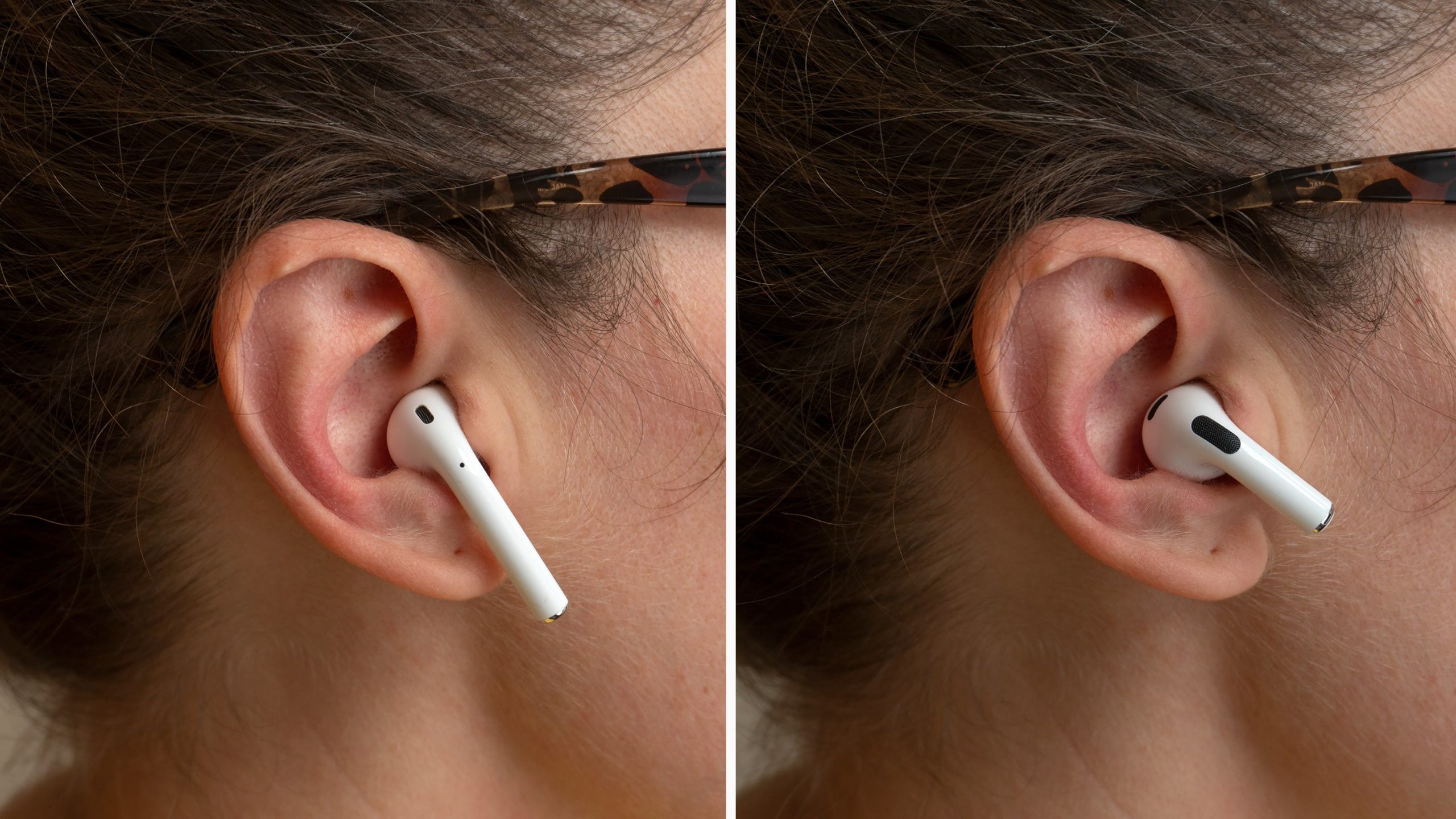
I’ve always struggled to keep the original AirPods in my ears, to the point where I skipped them altogether and waited for the AirPods Pro to arrive. But I have a much easier time keeping the new AirPods in place, even during light physical activities like going for a walk. They’re actually ever so slightly heavier than the original AirPods, but the shorter stem combined with a more streamlined design that puts the main speaker at a better angle feels like it offers better weight distribution. Would I trust them staying in place during a jog or a competitive game of squash? Absolutely not. I’ll still be reaching for my AirPods Pros for more physical activities, but I find the fit considerably better on the new AirPods.
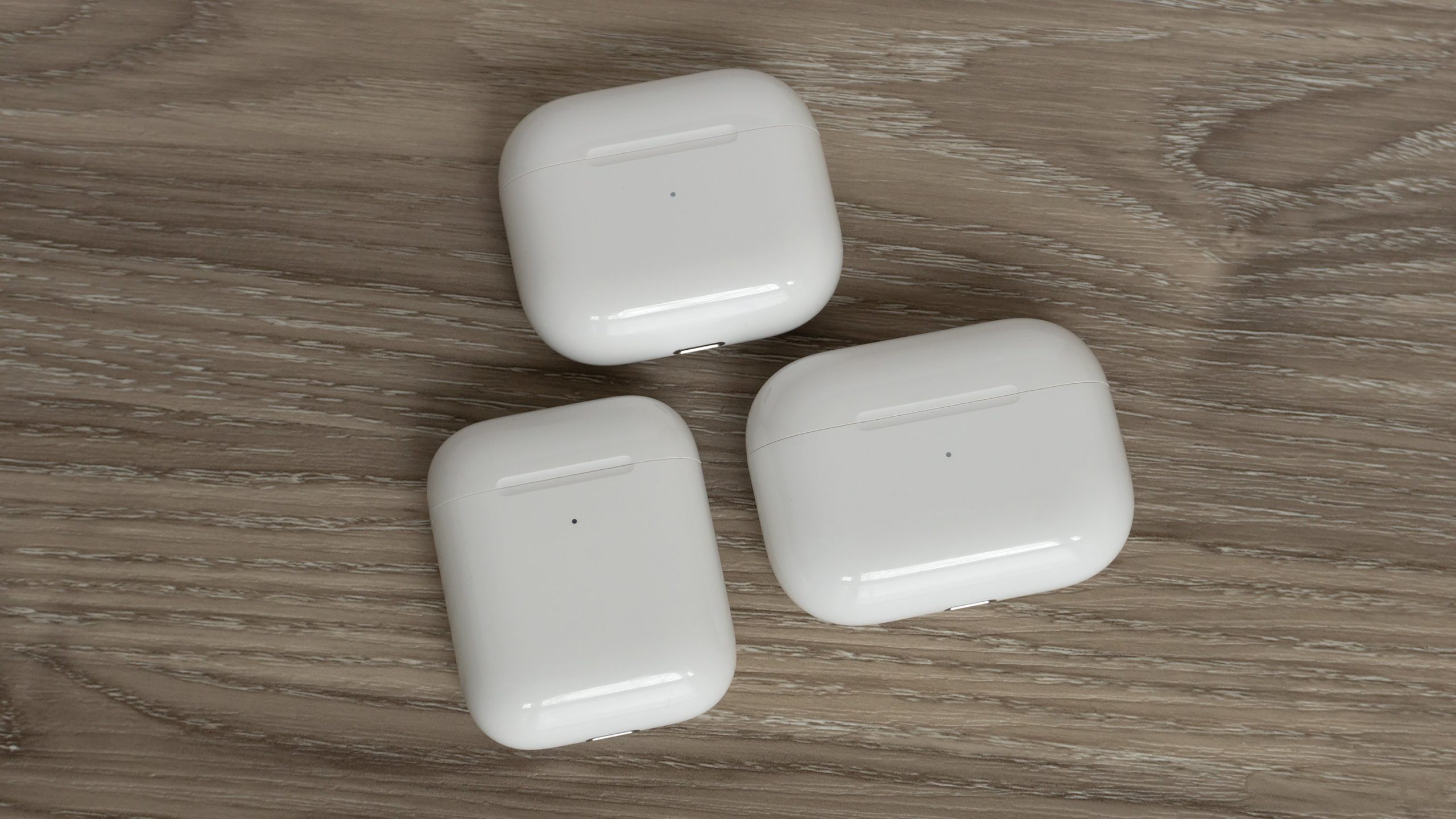
The new AirPods’ charging case also looks more like the AirPods Pro’s case, and while not quite as wide, it is slightly taller. But as with every AirPods case, it still easily slides in and out of a pocket thanks to a smooth polished finish.
MagSafe on Everything
I’ll admit that when Apple revealed that the new AirPods charging case would support the company’s MagSafe feature, I scratched my head as to what that meant. Would the new AirPods attach to the back of my iPhone for easy access? Could I stick them to the fridge for safe-keeping?

It turns out, while you can’t attach a tiny card wallet to the back of the AirPods charging case, it will do the same thing the iPhone 12 and 13 models do when dropped onto a MagSafe-compatible wireless charging pad. The case will perfectly align itself with the charging coil, and magnetically secure itself to the pad, so it’s almost impossible to accidentally knock it off during a charge. It works great, and is especially useful given how small the wireless receiver on the AirPods charging case is. Apple also added the feature to the AirPods Pro’s charging case last week, which makes sense. As far as I’m concerned, magnets should be added to the Qi standard and be included with every wireless charging product.
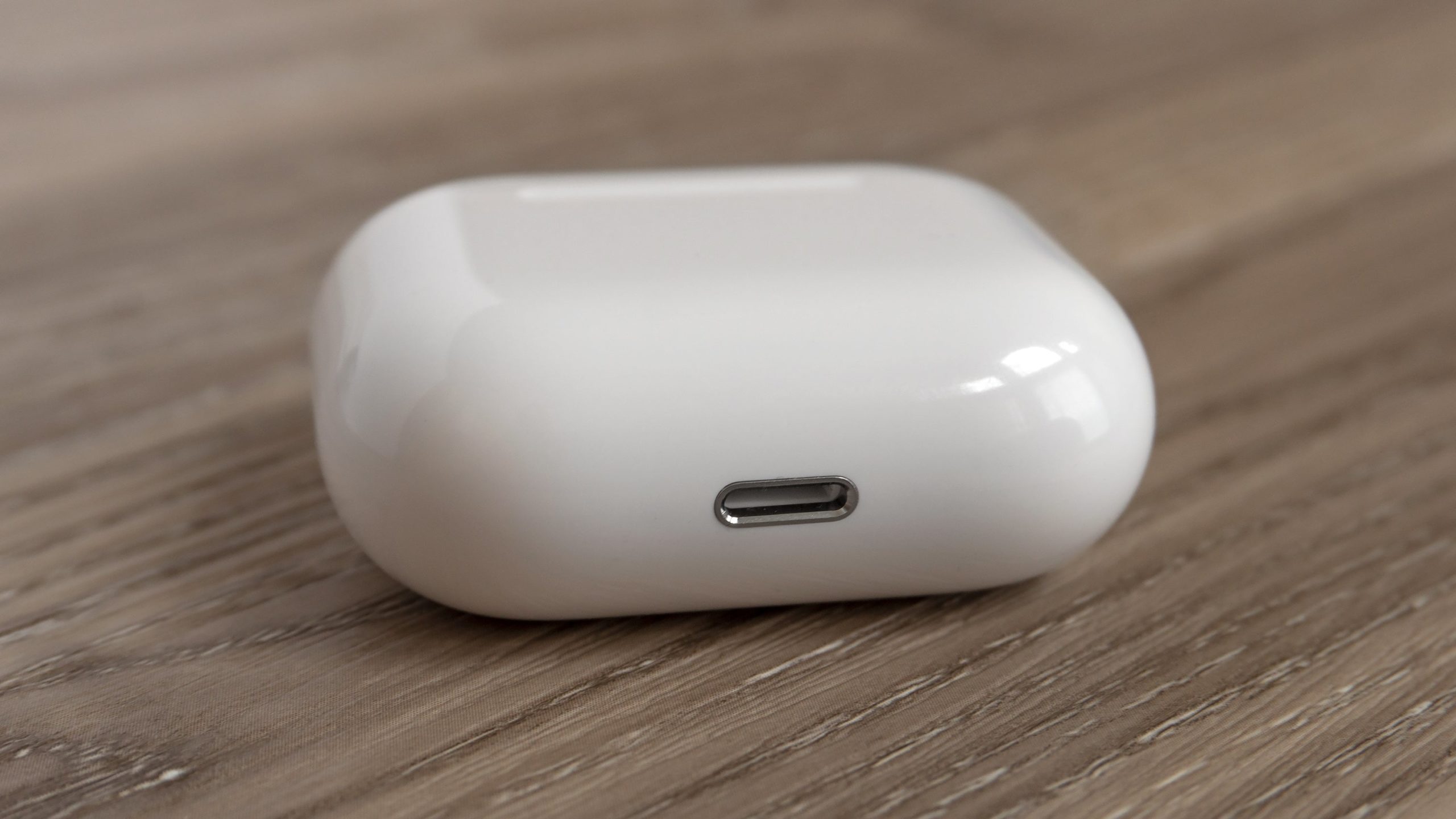
If you don’t want to go wireless, you can also charge the case with a cable, but it’s beyond me why in the year 2021 companies are still putting anything but USB-C charging ports on their devices. For charging the AirPods via its port, you’ll still need to keep a Lightning cable on hand.
Impressive Sound
I’m just going to come out and say it: I am not a fan of the how the first- and second-gen AirPods sound. I respect them for helping wireless earbuds become a popular consumer product, but I’ve always thought they sounded flat and disappointing. But the new AirPods? I actually find myself reaching for them over my AirPods Pro, which surprises even me. Do they sound better than the Pros? No (nor will they ever without silicone tips directing sound right into my ear canals), but I’m legitimately surprised at how good they do sound.
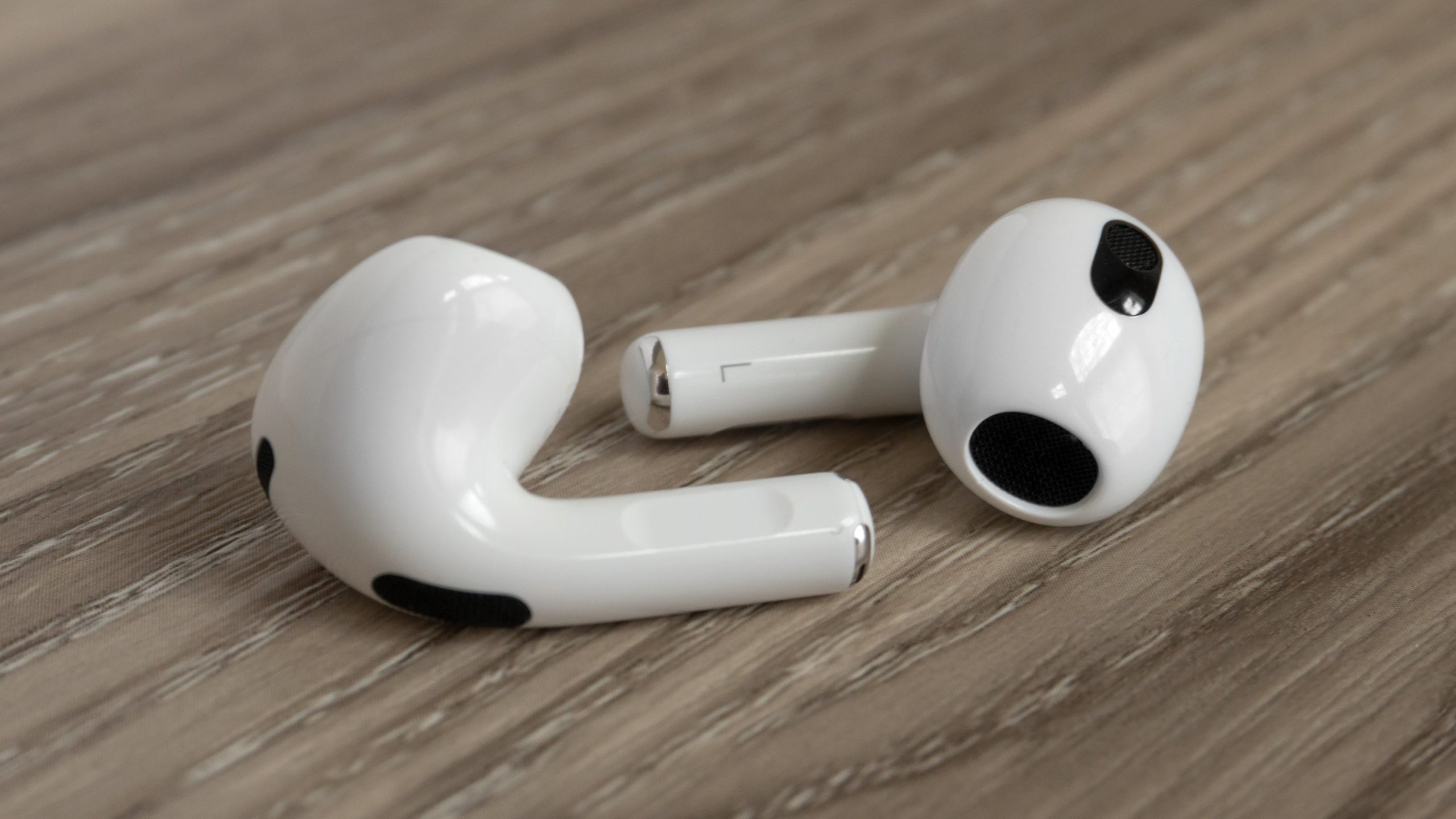
Apple advertises its new AirPods as having “a custom driver and high dynamic range amplifier that together produce rich consistent bass with crisp, clean high frequencies.” That really comes across when comparing the third-gen AirPods with older ones. The bass performance is very good, with a satisfying thump when the beat drops in tracks like the Tropic Remix of Surf Mesa’s “ily” at around the 30-second mark, but without completely muddling up higher frequencies. The separation between high and low frequencies isn’t as pronounced and distinct as it is with the AirPods Pro and other wireless earbuds that use silicone tips — sometimes the highs get a little lost if bass notes are really thumping in a track — but the new AirPods’ sound quality is a huge improvement, and because they’re so comfortable to wear, I keep choosing them over my AirPods Pro for most of my daily listening.
Premium Apple-Centric Features
When all I care about is enjoying my music, I reach for the Master & Dynamic MW08, which I still think are the best-sounding wireless earbuds you can buy. The rest of the time, I use Apple’s AirPods because of how well integrated the wireless earbuds are with the other Apple hardware I rely on. Bluetooth simply isn’t the best option for streaming audio (though one day it will be), and Apple’s H1 chip makes up for most of its shortcomings and delivers an impressively polished and smooth experience when using AirPods with iPhones. It sounds trivial, but Apple addressing the problems with Bluetooth is still one of the best reasons to choose the AirPods.
Being able to ask Siri to carry out simple playback functions without having to tap or squeeze anything is incredibly useful, as is the AirPods’ integrations with Apple’s Find My network, and being able to use an iPhone (and the strength of the Bluetooth connection) to pinpoint each buds’ nearby location should they end up lost between the couch cushions.
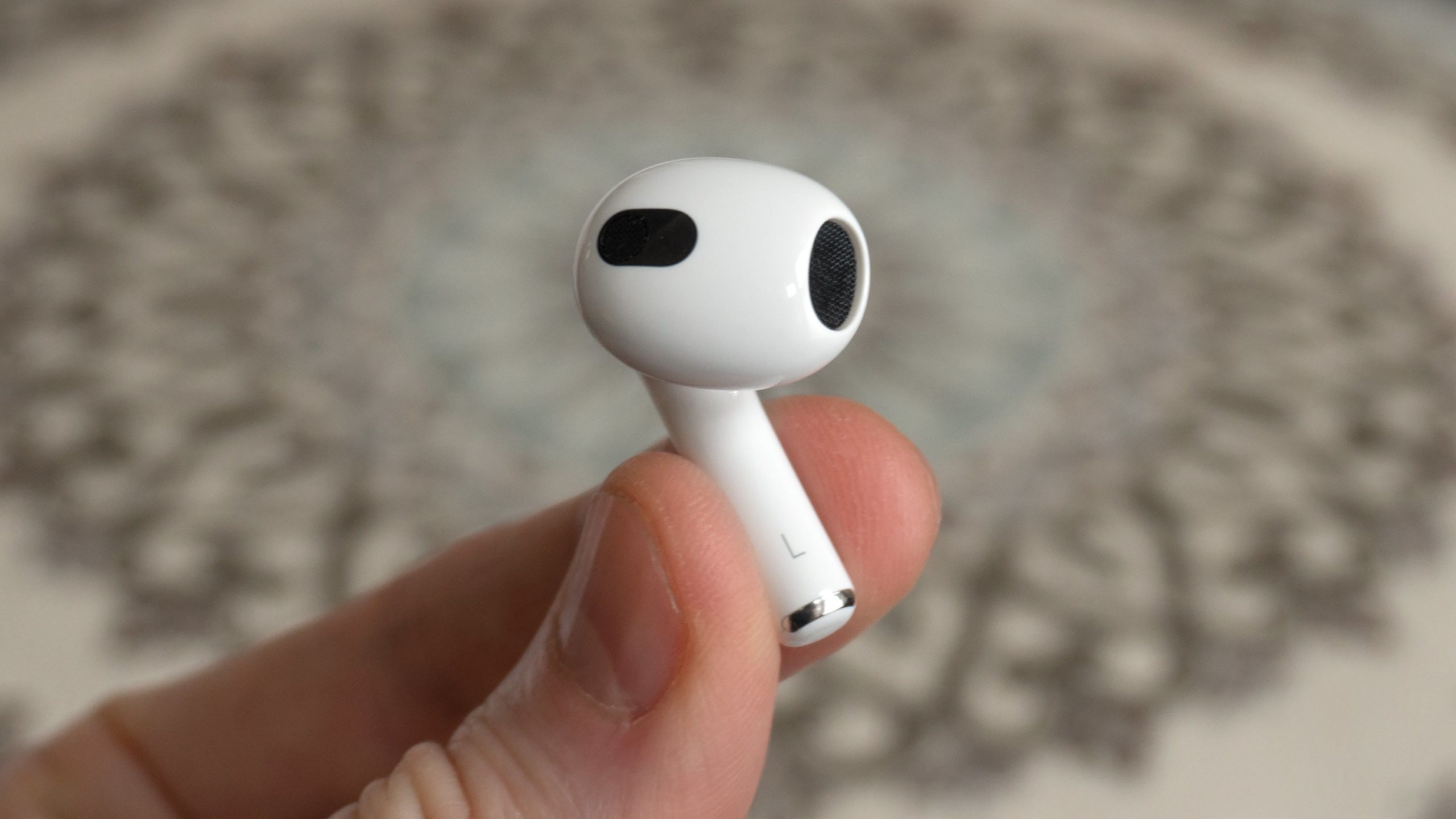
As for the Spatial Audio feature that Apple continues to push with its headphones? It was created to provide a surround sound-like experience using just a pair of speakers — which in this case is the wireless bud in each of your ears. It can not only make audio cues sound like they’re coming from different directions, like the multitude of speakers in a movie theatre do, but it can also lock the audio in space, so even if you turn your head, the source of the sound always sounds like it’s coming from the same location.
It’s a clever use of motion sensors and genuinely works, but I don’t think it will ever be the reason someone chooses Apple’s earbuds over the competition’s. When I’m on a group FaceTime call all I care about is getting off that group FaceTime call, not being able to acoustically differentiate where everyone is located on screen. It’s a feature Apple is pushing because it certainly differentiates the AirPods line, but it’s also a feature that helps Apple justify the AirPods’ price, and I don’t really think it’s as much a killer feature as Apple wants it to be.
Let’s Talk About the Price
The most surprising reveal for the new AirPods last week was the price tag. At AU$279, they’re $US20 (AU$27) cheaper than the second-gen AirPods, but waiting five years for a complete redesign means that the new AirPods face stiff competition today.
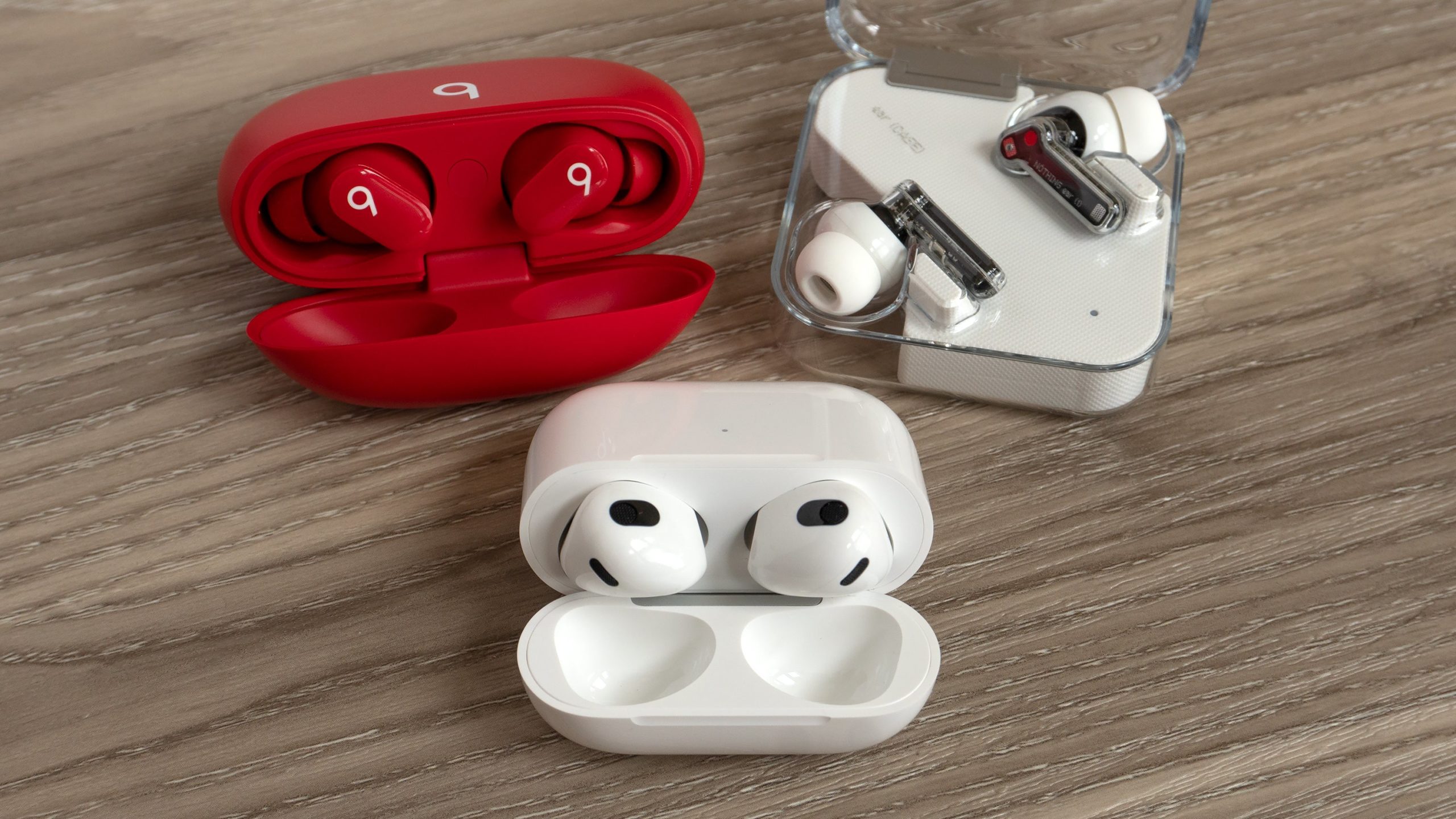
Not every pair of wireless earbuds on the market today offers active noise cancellation, and its omission just means that Apple plans to continue with the AirPods Pro — that’s fine. But for less than $US100 (AU$133), you can now get a pair of wireless earbuds that sound great, are easy to wear, and offer ANC. Earbuds like the Nothing Ear (1) don’t offer the same level of streamlined connectivity as the AirPods, but Apple’s Beats Studio Buds also offer ANC, use the same H1 chip as the AirPods, and can be had for $US150 (AU$200) — about $US30 (AU$40) cheaper.
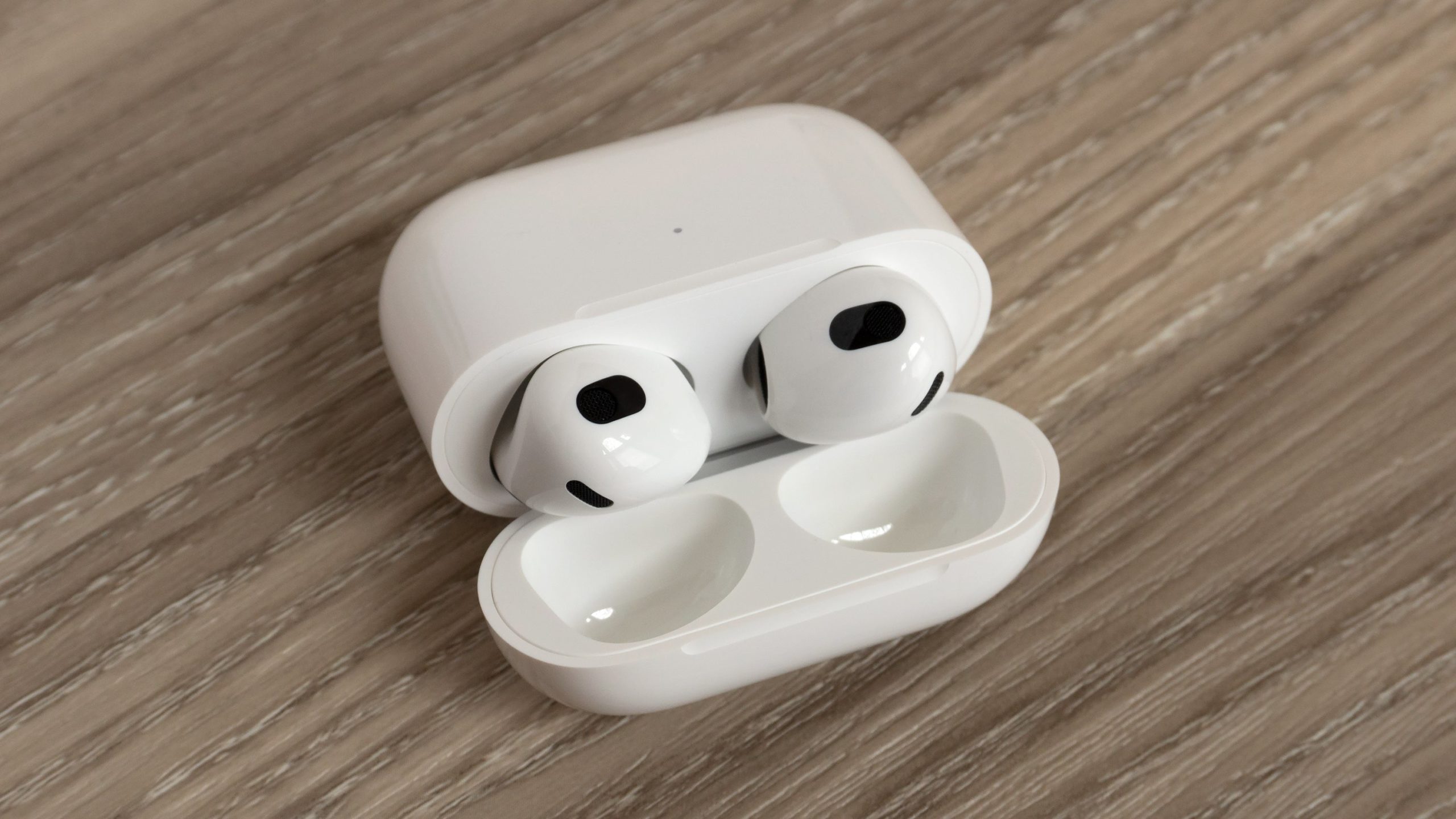
Does that mean the new AirPods are a pass? Not at all. They’re a fantastic upgrade in every way, and for those who hate having silicone tips crammed into their ear canals (I’ve been using them for decades and even my ears still get sore after prolonged use), the new AirPods are incredibly comfortable to use while still providing amazing sound quality — something I didn’t really think was possible. I’ve been wearing them around the house for entire days since they arrived, and of all the wireless earbuds I’ve tested over the years, nothing comes close to how comfortable these feel.
If you’re an OG AirPods devotee, then you’ve probably already got a pair preordered and on the way. If you’ve been holding out for reviews to see if they’re legitimately a solid upgrade, the answer is a definitive yes — they’re better than the old AirPods by far. But if you’re considering an AirPods upgrade and want to prioritise features like sound quality and noise cancellation over your earbuds playing nice with Apple’s hardware ecosystem, there are now many other excellent AirPods alternatives to treat your ears if you’ve got $US180 (AU$240) to spend.
